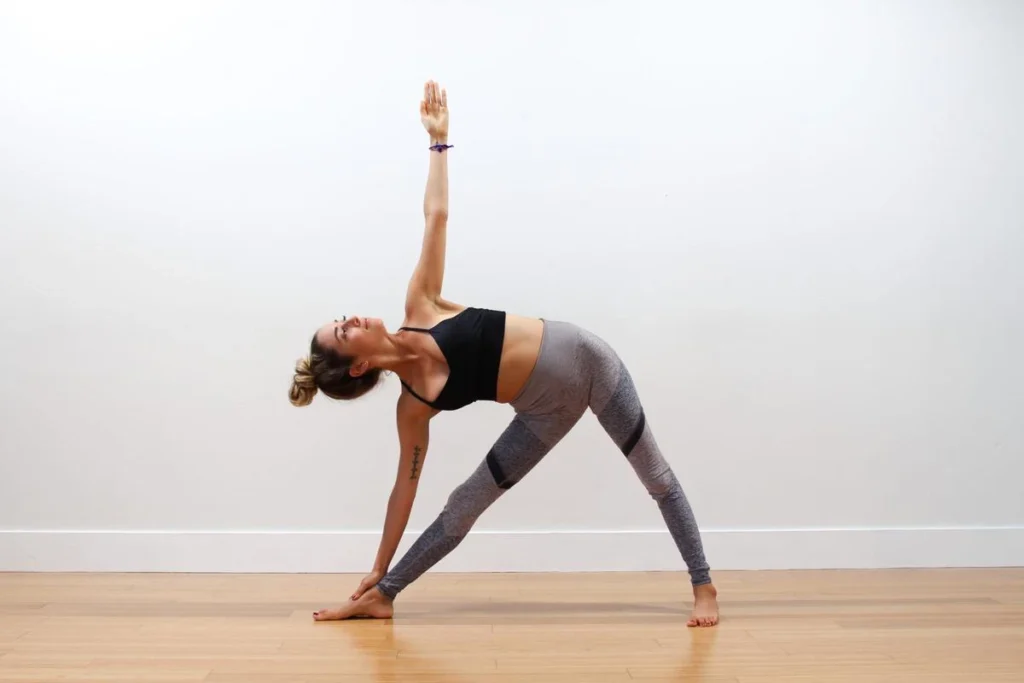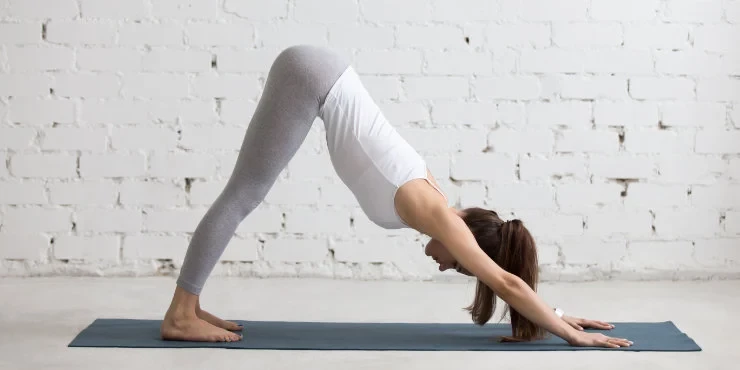Bloating is a common and often uncomfortable sensation characterized by a swollen or distended abdomen. It can be caused by various factors such as poor digestion, food intolerances, swallowing air, constipation, and hormonal changes. Fortunately, yoga offers a natural and effective way to manage bloating, promoting digestive health and overall well-being.

Understanding Bloating
To address bloating effectively, it’s essential to have a basic understanding of the digestive system. The intricate process of digestion involves the breakdown of food, absorption of nutrients, and elimination of waste. Any disruption in this process can lead to bloating. Factors such as inadequate digestion, food intolerances, excessive air intake, constipation, and hormonal fluctuations can contribute to this uncomfortable condition.

Benefits of Yoga for Bloating
- Promoting Digestion: Certain yoga poses stimulate the digestive fire, known as Agni, which enhances the body’s ability to digest food properly. Improved blood circulation to the abdominal organs also supports optimal digestion.
- Relaxing the Abdominal Muscles: Yoga poses that stretch and relax the abdominal muscles can alleviate tension and tightness, providing relief from bloating.
- Encouraging Bowel Movements: Specific yoga asanas help stimulate peristalsis, the wave-like contractions of the intestines that promote regular bowel movements. This can be particularly beneficial for those experiencing bloating due to constipation.
- Reducing Stress and Anxiety: Stress and anxiety can disrupt the digestive process and contribute to bloating. Yoga’s focus on deep breathing, relaxation, and mindfulness helps calm the mind and reduce stress, thereby improving digestion and reducing bloating.
- Balancing Hormonal Activity: Hormonal changes, such as those experienced during menstruation or menopause, can contribute to bloating. Yoga practice helps regulate hormone production and balance the endocrine system, potentially reducing bloating associated with hormonal fluctuations.
Recommended Yoga Poses for Bloating

- Wind-Relieving Pose (Pavanamuktasana): This pose helps release gas from the digestive system, relieving bloating and discomfort.
- Cat-Cow Pose (Marjariasana-Bitilasana): The gentle movements of cat-cow pose massage the abdominal organs, promoting digestion and relieving bloating.
- Downward Facing Dog Pose (Adho Mukha Svanasana): This pose allows for a gentle inversion, improving blood flow to the digestive organs and aiding digestion.
- Extended Triangle Pose (Utthita Trikonasana): Triangle pose stimulates digestion and stretches the abdominal muscles, reducing bloating.
- Seated Forward Bend Pose (Paschimottanasana): Forward bends compress the abdomen, stimulating the digestive organs and promoting bowel regularity.
- Child’s Pose (Balasana): Child’s pose relaxes the abdominal area, releases tension, and can provide relief from bloating.
- Bridge Pose (Setu Bandhasana): Bridge pose massages the abdominal organs, stimulates digestion, and relieves bloating.
- Supine Twist Pose (Supta Matsyendrasana): This gentle twist helps massage the abdominal organs, aiding digestion and reducing bloating.
- Corpse Pose (Savasana): Savasana promotes deep relaxation, reduces stress, and allows the body to fully integrate the benefits of the yoga practice.

Pranayama Techniques for Bloating Relief
In addition to yoga poses, incorporating specific breathing techniques, known as pranayama, can further enhance the management of bloating. Here are three pranayama techniques that can be practiced for bloating relief:
- Deep Belly Breathing: This technique involves breathing deeply into the belly, allowing the diaphragm to fully engage. It helps relax the abdominal muscles, encourages peristalsis, and promotes optimal digestion.
- Nadi Shodhana (Alternate Nostril Breathing): Nadi Shodhana balances the flow of energy in the body, reducing stress and promoting a calm state of mind. It indirectly supports digestive health and helps alleviate bloating caused by stress or anxiety.
- Kapalabhati (Skull-Shining Breath): Kapalabhati is an energizing breathing technique that involves forceful exhalations and passive inhalations. It stimulates the abdominal muscles, massages the digestive organs, and improves digestion, reducing bloating.

Incorporating Yoga into Your Routine
To fully benefit from yoga for bloating, it’s important to create a regular practice. Consider the following tips:
- Creating a Regular Yoga Practice: Aim for at least 15-20 minutes of yoga practice, three to five times per week. Consistency is key to experiencing the long-term benefits.
- Modifying Poses for Individual Needs: Honor your body’s limitations and modify yoga poses as necessary. Listen to your body and avoid any movements that exacerbate discomfort or pain.
- Pairing Yoga with Mindful Eating Habits: Combine yoga practice with mindful eating habits. Chew your food thoroughly, eat at a relaxed pace, and be mindful of portion sizes to support optimal digestion and reduce bloating.

Other Lifestyle Tips for Managing Bloating
In addition to yoga, adopting certain lifestyle habits can further aid in managing bloating:
- Maintaining a Balanced Diet: Consume a well-balanced diet rich in fiber, whole grains, fruits, vegetables, and lean proteins. Avoid excessive consumption of processed foods, high-fat meals, and foods known to trigger bloating or food intolerances.
- Drinking Enough Water: Staying hydrated supports proper digestion and helps prevent constipation, a common cause of bloating. Aim to drink at least eight glasses of water per day.
- Managing Stress Levels: Stress can disrupt the digestive process and contribute to bloating. Engage in stress-reducing activities such as meditation, deep breathing, or gentle yoga practices like restorative yoga.
- Avoiding Carbonated Beverages: Carbonated drinks can introduce excess air into the digestive system, leading to bloating. Opt for still water or herbal teas instead.
- Chewing Food Thoroughly: Take the time to chew your food thoroughly, allowing for proper breakdown and easier digestion. This simple practice can significantly reduce the likelihood of bloating.
When to Seek Medical Advice
While yoga and lifestyle changes can effectively manage bloating in most cases, it’s important to consult a healthcare professional if:
- Bloating persists or becomes severe despite lifestyle modifications.
- You experience additional concerning symptoms such as unexplained weight loss, severe abdominal pain, or blood in the stool.
- You have an underlying medical condition that may require specific treatment or management.
Conclusion
Yoga offers a holistic and empowering approach to managing bloating. By incorporating specific yoga poses, practicing pranayama techniques, and making lifestyle adjustments, you can support healthy digestion, reduce bloating, and enhance your overall well-being. Embrace the transformative power of yoga and discover a more balanced and comfortable digestive system.





